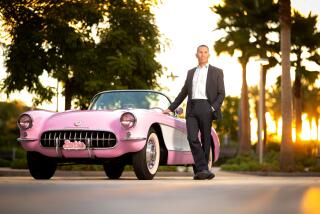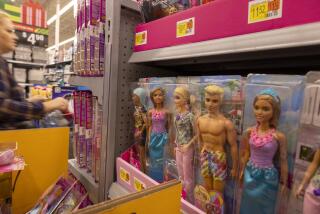Globalism and Barbie’s behind
Mattel’s recent recall of lead-tainted toys made in China reminded me of my childhood. As a Chinese American girl growing up in the 1970s, I was fascinated by Barbie’s rear end. Not only was it plump and round, like her prominent breasts, but my doll carried this inscription: “Made in Hong Kong.”
In the 1960s, long before outsourcing became rampant in other industries, Mattel and other toy manufacturers opened factories in Asia, employing thousands of poor, single women. My mother was one of them. “In 1965, I worked in a toy factory in Hong Kong,” she recalled. “I made the equivalent of a dollar a day putting arms and legs into blond, blue-eyed dolls.”
She didn’t think her employer was exploitative, though low wages were the main reason she wanted to emigrate to the United States. “I was waiting to get married, so I didn’t care. But I would have starved had I been forced to live on that paycheck,” she said.
As it turned out, Barbie didn’t stay in Hong Kong either. In the 1980s, Barbie’s provenance changed -- most were “Made in the Philippines,” with some in made in Malaysia or Thailand.
What happened? Progress. As Hong Kong’s economy took off and labor costs rose, Mattel literally saw the writing on Barbie’s butt and moved from the then-British colony to cheaper shores. By the 1990s, she came from Indonesia; in 2007, Barbie is, like millions of other goods, “Made in China.”
If I were an economist, I’d study Barbie as a barometer of macroeconomic ups and downs. To see a developing nation disappear from Barbie’s rump is a reliable indicator that it is no longer “behind.” Take Japan, for example.
After Barbie creators Ruth and Elliot Handler introduced “the world’s first teenage fashion model” to buyers at the 1959 American International Toy Fair, Japan welcomed Mattel to its post-World War II economy, still in recovery after the U.S. occupation. Today, Barbie collectors pay thousands of dollars for vintage clothes, dolls and accessories that say “Made in Japan,” but the likelihood of seeing a Barbie factory there is akin to seeing Paris Hilton in a convent.
While feminists have long vilified Mattel’s iconic creation as a destructive role model for girls -- because of her anatomically incorrect dimensions -- I believe Barbie is a useful tool to teach kids about how the global economy penetrates into every aspect of our everyday lives. Want to talk about how dependent we are on the labor of foreign hands? Just pick up a Barbie. Want to know where Mommy’s and/or Daddy’s job disappeared to? Chances are it migrated to the same country welcoming a new Barbie factory.
How times have changed. My mother never imagined that her Third World country would ever pose an economic threat to the U.S. “I used to envy American workers; the dollar was worth so much,” she said. Who knew that, 40 years later, cheap labor would be energizing China’s booming economy, and the U.S. would be struggling under a huge budget deficit and a weak dollar?
Who knows which country will appear next on Barbie’s butt? Would it be irony to find it saying “Made in USA”?
Jennifer Tang is a writer in New York City.
More to Read
A cure for the common opinion
Get thought-provoking perspectives with our weekly newsletter.
You may occasionally receive promotional content from the Los Angeles Times.










